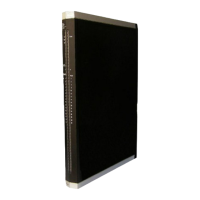X-DI 32 02 4 Start-up
HI 801 017 E Rev. 4.00 Page 35 of 56
4.3 Configuring the Module in SILworX
The module is configured in the Hardware Editor of the SILworX programming tool.
Observe the following points when configuring the module:
To diagnose the module and channels, both the statuses and the measured value can
be evaluated within the user program. For more information on the statuses and
parameters, refer to the tables starting with Chapter
4.3.1.
The module can be used to safely define two thresholds for the line diagnosis. The
switching thresholds can be configured in SILworX, in the configuration of the module.
If the proximity switch supply of the module is used, activate the Supply x On parameter.
To diagnose the proximity switch supply in use, the Supply x OK status can be
evaluated in the user program. Refer to
Table 22 for more details about the Supply X
OK status.
If the modules are redundantly connected, the proximity switch supply group must be
activated using the Supply X On parameter.
To diagnose the redundant proximity switch supplies, the Supply X OK statuses of the
two proximity switch supplies in use must be evaluated in the user program using an OR
function block.
A time-off delay (e.g., functional block TOF) of at least one CPU cycle must be used on
the OR function block's output. This avoids temporary interruptions of the diagnostic
monitoring process (e.g., while replacing a redundant module). Note that this measure
results in a corresponding delay in the evaluation of this status.
If a redundancy group is created, its configuration is defined in the tabs. The tabs
specific to the redundancy group differ from those of the individual modules, see the
following tables.
To evaluate the statuses from within the user program, assign the system parameters
global variables. Perform this step in the module's detail view of the Hardware Editor.
The following tables present the statuses and parameters for the module in the same order
given in the SILworX Hardware Editor.
TIP
To convert hexadecimal values to bit strings a scientific calculator such as the Windows
®
calculator with the corresponding view can be used.

